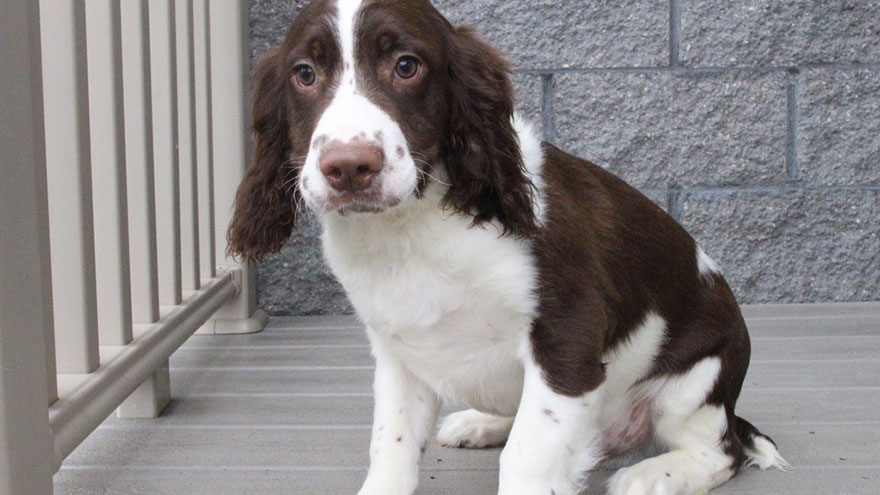How to Care for an English Springer Spaniel
English springer spaniels fall into two categories: show dogs and field trial dogs. Because each breeding line has been separated for around 70 years, the difference between the two is noticeable. Springers bred for show have consistent markings and longer ears.
While they can work as hunting dogs, they lack the coordination and speed for agility training. Field springers are more athletic, with shorter ears and more varied markings. In many cases, the care you provide your English springer spaniel won’t vary between the two types, but in some ways they each have different needs.
Affectionate, Playful Puppies
Whether bred for beauty or athleticism, English springer spaniel puppies have soft coats, friendly dispositions and a good dose of intelligence. Start training your puppy right away so he’ll develop good puppy manners and make sure he gets plenty of exercise, depending on his age.
Up to 4 Months Old
Enroll in puppy kindergarten to start training and socializing your springer with other puppies. A few regular sessions of formalized training per week, plus two short play sessions every day should be sufficient exercise. You also can start teaching fetch with a ball or toy in the yard.
4 to 6 Months Old
Start walking your springer pup about a half mile every day. While he might love to run with you, wait until he’s older — running for long distances on pavement can damage his joints and affect his growth. In addition to a daily walk, play with your pup every day and continue at least weekly sessions of kindergarten.

6 Months to 1 Year Old
Keep daily walks to a half mile, but lengthen play sessions to 40 minutes twice per day. Work with your springer pup to fetch, catch a Frisbee and practice the obedience he’s learned in puppy kindergarten.
1 Year Old
Your English springer spaniel’s joints can handle longer walks now, and even a bit of jogging. Start with a mile or less and gradually increase the distance as he grows.
Energetic Competitors
English springer spaniels from field training lines will enjoy training for agility and field trials. Training stimulates your dog’s intellect and keeps him fit and trim. It also prevents boredom and destructive behavior.
Agility Competitions
In agility competitions, springers complete obstacle courses of varying difficulty. Dogs must be at least a year old to compete. Jumping obstacles put strain on growing bones and joints, but you can start training on other obstacles, such as tunnels, when your pup is young.

Field Trials
Field trials are competitions in which dogs complete typical hunting tasks such as searching out and flushing birds. Most are conducted on land, but some competitions include a water component.
Well-Groomed Beauties
English springer spaniels bred for show are less athletic than field spaniels. They’re bred to more closely conform with the American Kennel Club breed standard and make excellent companion animals.
While both types of English springers need consistent brushing, show pups benefit more from professional care to keep fringing on their legs, chest and underbelly from looking scraggly. Show pups have longer ears, but even field pups need close attention and regular cleaning to prevent ear infections.
Healthy, Happy Family Members
English springer spaniels love to be near their people. If left alone too often, they can engage in nervous barking or develop separation anxiety. Spend plenty of quality family time with your pup.
Adopt your puppy from a reputable breeder. You’ll have a healthier dog with fewer problems that tend to plague the breed, such as hip dysplasia or progressive retinal atrophy. Avoid ear infections and skin conditions with regular grooming.
Feed your dog a high-quality dry dog food. Establish a regular feeding schedule, twice per day. Puppies can eat 4 cups of puppy food; adults should have up to 2 cups of food formulated for adult dogs.
Seek regular veterinary care for vaccinations and checkups.

